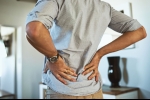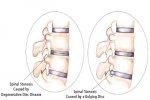Home »
Blog » Pain Management
| Stem Cell, PRP, Acupuncture in Queens & Long Island, New York
Pain Management | Stem Cell, PRP, Acupuncture in Queens & Long Island, New York
Stem cell therapy is an emerging treatment option that continues to be proven successful, not only by scientist and researchers but also by doctors who utilize this treatment for a variety of conditions, including chronic pain. This process uses a person’s own stem cells to repair damaged tissue and regenerate new healthy tissue, to help repair and heal damage and degeneration. Stem cell treatments have reduced the need for prescription medication and surgery, proving to be a helpful tool towards managing and potentially eliminating pain in the body.
Read more
Sleep Better - When you have back pain, sleeping can be hard. It can be a vicious cycle because when you don't get enough sleep, your back pain may feel worse. A poor sleep position can also aggravate back pain. Try lying on your side. Place a pillow between your knees to keep your spine in a neutral position and relieve strain on your back. If you need to sleep on your back, slide a pillow under your knees. Be sure to sleep on a comfortably firm mattress.
Read more
Compared to other regions of the spine, diagnosing upper back pain can be especially complicated because it has more potential sources of pain, including the ribs connecting at each level of the thoracic spine and several internal organs and muscle groups in close proximity. While it is sometimes impossible to find the exact cause of a person’s upper back pain, the following three-step process is typically followed to narrow down which causes are more likely.
Read more
If lower back pain does not start to subside within one to two weeks, or if there are troubling symptoms, medical care should be sought. A health professional will first identify a general source of pain and then determine the appropriate and effective methods of pain management. Certain symptoms may indicate a medical emergency. While these conditions are rare, it is important to seek immediate medical attention should any of the following symptoms accompany back pain:
Read more
Ginger - A staple of traditional medicine, this pungent root is probably best known for its anti-nausea, stomach-soothing properties. But ginger can also fight pain, including aching joints from arthritis as well as menstrual cramps. One study found ginger capsules worked as well as over-the-counter anti-inflammatory drugs like ibuprofen at relieving period pain.
Read more
Upper back pain symptoms can differ from person to person. For some, the pain might be mild and go away within a couple days, but for others, the pain can worsen and interfere with daily tasks. Upper back pain symptoms and treatment plans can vary greatly depending on the problem’s underlying cause.
Read more
For everyday causes of lower back pain, standard at-home pain management is a reasonable approach. In fact, most cases of lower back pain are caused by a muscle strain and will get better relatively quickly and do not require treatment from a medical professional. If pain has lasted longer than one to two weeks or begins to interfere with one’s mobility and daily activities, or if there are troubling symptoms, seeking care from a medical professional is recommended.
Read more
People who play sports or are physically active are familiar with sprains (a stretched or torn ligament) and strains (a stretched or torn muscle or tendon). Both cause swelling and inflammation. Sprains can give you bruises. Strains may trigger muscle spasms. Use the RICE method for early treatment -- rest, ice, compression, and elevation. Take an over-the-counter (OTC) pain reliever. See a doctor if you have numbness or tingling, you can't move a joint, or it doesn't get better within a week.
Read more
The thoracic spine also referred to as the upper back or middle back is designed for stability to anchor the rib cage and protect vital internal organs within the chest. Compared to the neck (cervical spine) and lower back (lumbar spine), the upper back is remarkably resistant to injury and pain. When upper back pain does occur, it is typically due to long-term poor posture or an injury that overpowers the thoracic spine’s sturdiness. This article explores various symptoms of upper back pain, potential causes, and modern diagnostic methods and treatments.
Read more
There is a wide range of nonoperative treatments for spinal stenosis. The more common options include:
Exercises - A suitable program of physical therapy and exercise is a component of almost every spinal stenosis treatment program. While the spinal stenosis exercises are not a cure, it is important for patients to remain active as tolerated and not become additionally debilitated from inactivity.
Read more
Love this Post? Spread the World






















